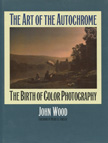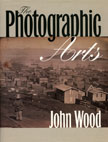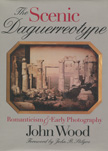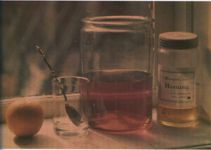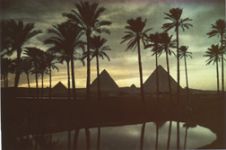The Art of the Autochrome
"John Wood, who has written previously on the daguerreotype, traces the life and death of the autochrome, photography's first bright bouquet…The delicate images here remind us how completely color was mastered in the early decades of the century and how difficult it has been to attain such mastery since then."—Chicago Tribune
"Wood turns his very thoughtful, scholarly attention from the early history of photography with his previous books The Daguerreotype: A Sesquicentennial Celebration (1989) and America and the Daguerreotype (1991) to the history of color photography…Wood explains the technical aspects of this fragile, beautiful process without losing the importance of it artistic applications. He is careful to construct events within the context of photographic history…It is also worth noting that Wood presents some intriguing ideas concerning the photographic representation of women, reflecting their changing status in Western culture at this time."—Choice
"The writing in this modest book is surprisingly wonderful. Witty and thoroughly researched, Wood's text draws boldly original revisionist conclusions about the history of photography."—Los Angeles Times
"Factual and evocative."—Publishers Weekly
The autochrome is the rarest, most fragile, and, to a great many eyes, most beautiful of the photographic processes. It represents not just the birth of color photography but color as luminous as the camera ever caught it. Illustrated with seventy-five magnificent full-color plates selected from collections throughout the world, this in the only comprehensive scholarly study of the world's first practical color photographic process. Invented in 1904 and marketed commercially in 1907 by the French photographic entrepreneurs Auguste and Louis Lumière, the autochrome has a dreamlike, shimmering appeal.
Other color processes were invented prior to the autochrome, but they were more cumbersome, less practical, and less faithful. The method was exotic and the results were incredibly fragile: potato starch was dyed red, green, and blue-violet, then coated onto a glass plate and covered with black-and-white emulsion. The grains of starch acted as tiny filters during exposure; then the light-sensitive emulsion was reversed into a positive, glowing transparency that has the look of Impressionist paintings.
John Wood discusses the autochrome in the context of the art movement of its time, contributing not only to early photographic studies but also to the larger area of the role of photography in art, particularly within the Symbolist and Viennese Secession movements. He provides extensive notes on the illustrations and a comprehensive bibliography of the autochrome, consisting of five hundred items extracted from all the leading photographic journals of the day.
Included in the illustrations are portraits and still lifes by Alfred Stieglitz, Heinrich Kühn, Eduard Steichen, and the major artists of the Photo-Secession. There are scenes from around the world by the photographers who worked for the National Geographic Society and for Albert Kahn, a wealthy Parisian banker who wished to have the whole world autochromed, as well as a variety of studies, portraits, and views by forgotten male and female pioneers. These beautifully reproduced images provide lyrical, radiant examples of the art of the autochrome.


